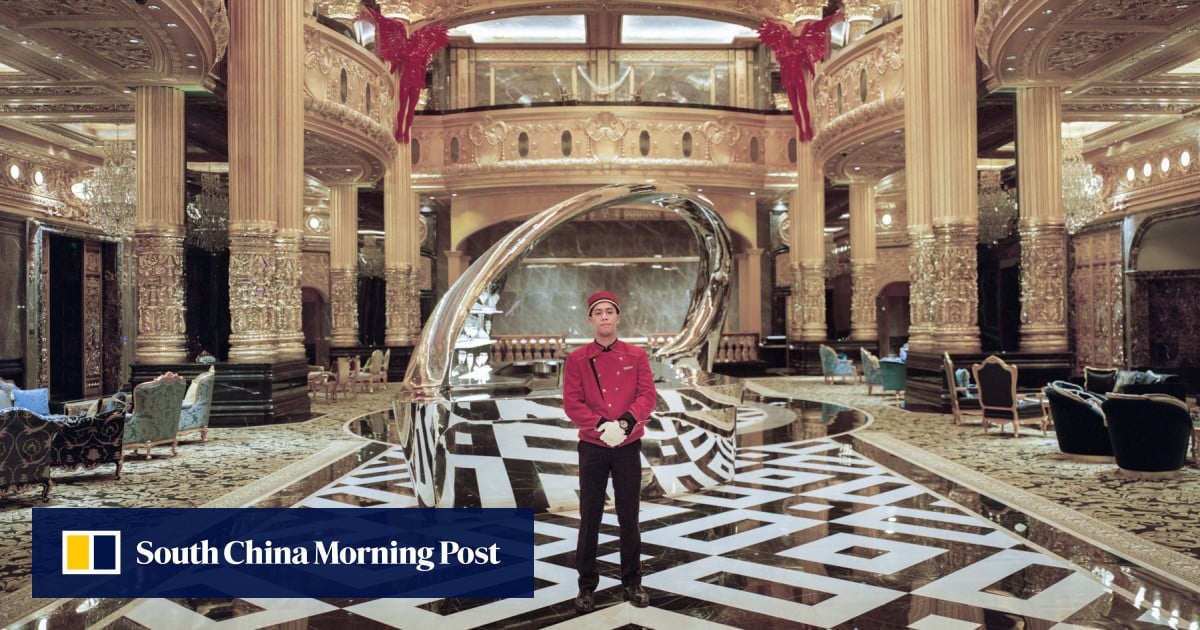Having just completed a master of fine arts degree at the Massachusetts College of Art and Design, he had been awarded a Fulbright fellowship – part of a United States cultural exchange programme – to photograph Macau and its ongoing evolution, using a large-format film camera for optimal image quality.

“My dad, for many years, taught US-China political relations as a professor, so I grew up with an understanding that China was, by default, interesting and important,” he says.
“It blew my mind when I discovered there was [such a place] with this combination of Portuguese culture and Chinese culture.”
Working with a traditional 4×5 film camera – which uses film measuring 4 inches by 5 inches that comes on individual sheets – Lampton spent a year photographing various scenes in Macau. He returned in 2015 and 2019 to capture additional images.
Now 71 of his photographs have been compiled into a book, titled Nothing Serious Can Happen Here: Photographs from Macau, which will be published by Kehrer Verlag in September in Europe and Asia.


The name of the book is taken from W.H. Auden’s 1938 poem Macao, a playful take on the place he called “a weed from Catholic Europe” where gambling and prostitution happened in the shadows of its many churches.
Lampton says the city remains a strange blend of extremes. He recalls the first time he got off the hydrofoil from Hong Kong and was met with the sight of the artificial volcano at Macau Fisherman’s Wharf.
“You have these beautiful Chinese and Portuguese historical buildings sitting right next to a very cheap-looking fake volcano. You could say that that volcano cheapens the real stuff, but you could also say, no, maybe the truly historical stuff elevates that stuff, right? It kind of all blends together,” he says.
“The poem is talking about those same contrasts that I am interested in visually. You have a church standing next to, [Auden] says, a brothel, but you could swap it with a casino.”


Lampton’s initial goal was to capture historic buildings and their interiors, but he quickly pivoted once he gained a better understanding of the city.
“It just became so evident that the story was really about the development and the confluence of these different motivations, between the casinos, Portuguese history and Chinese history.”
So during his first stint in Macau, Lampton spent many of his days roaming around the Cotai area, observing the casinos that had just begun to break ground. The early pages of his book feature a photograph of the City of Dreams casino under construction, and another of a lion sculpture being hoisted into The Venetian.


But he felt it was important to contrast the grandiose nature of Macau’s new buildings with other aspects of the city.
“I didn’t want the whole thing to be just about casinos and construction, because there’s so much to Macau that’s rich and interesting beyond that,” he says.
As a result, readers will also see images of historic buildings that show Macau’s Chinese and Portuguese influences, such as the Mandarin’s House and the Dom Pedro V Theatre, the latter being the first Western-style theatre built in China.
There are also photographs of everyday people, such as Anni and Dog, Artist Sketching and Teens on Grandma’s Grave during Qingming Festival.



In total, Lampton shot over 2,000 images during his first year in Macau.
“With digital cameras, that sounds like nothing,” he says. But the length of time it takes to set up a large-format camera meant many exhausting eight-hour shooting sessions.
When he returned to the city in 2015 and 2019, he aimed to capture photos that would offer a before-and-after contrast with his first trip. However, he discovered it was difficult to return to the same spots he had shot from earlier, as the city had changed so much.




Still, he was glad to discover that much remains of old Macau.
“I don’t know if it was their intention, but [the casinos on the peninsula are] pretty isolated to just one area,” he says.
“Everyone that goes to gamble is really going to that one place, and if you don’t want to be around that, then you don’t really have to. I hope that doesn’t change.”

